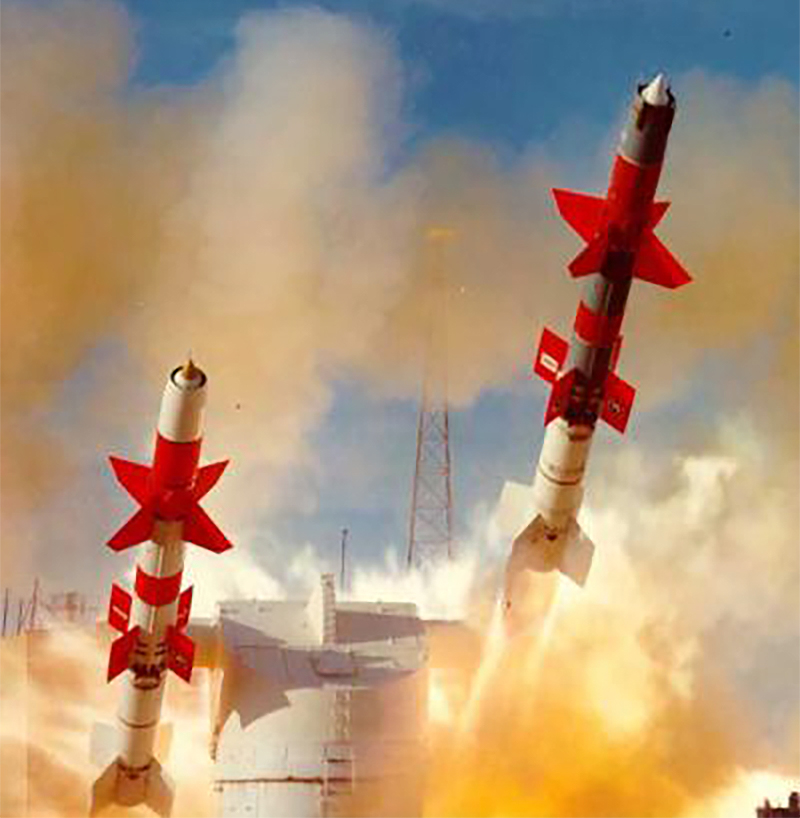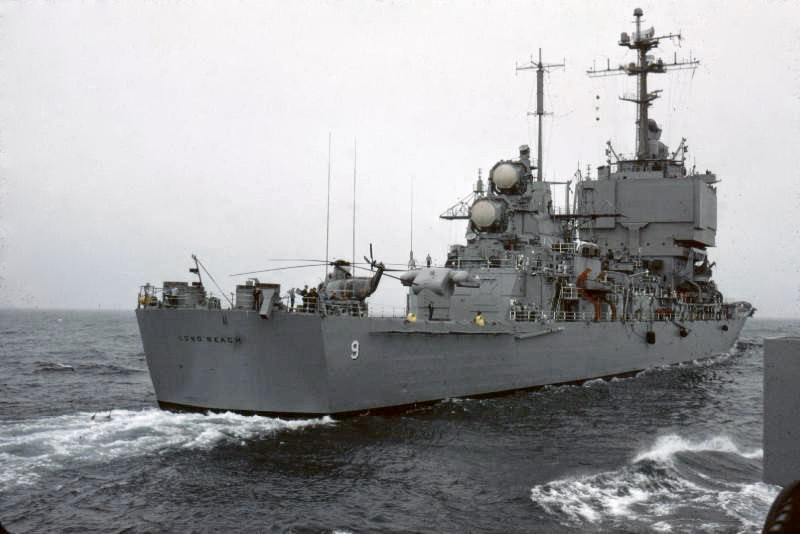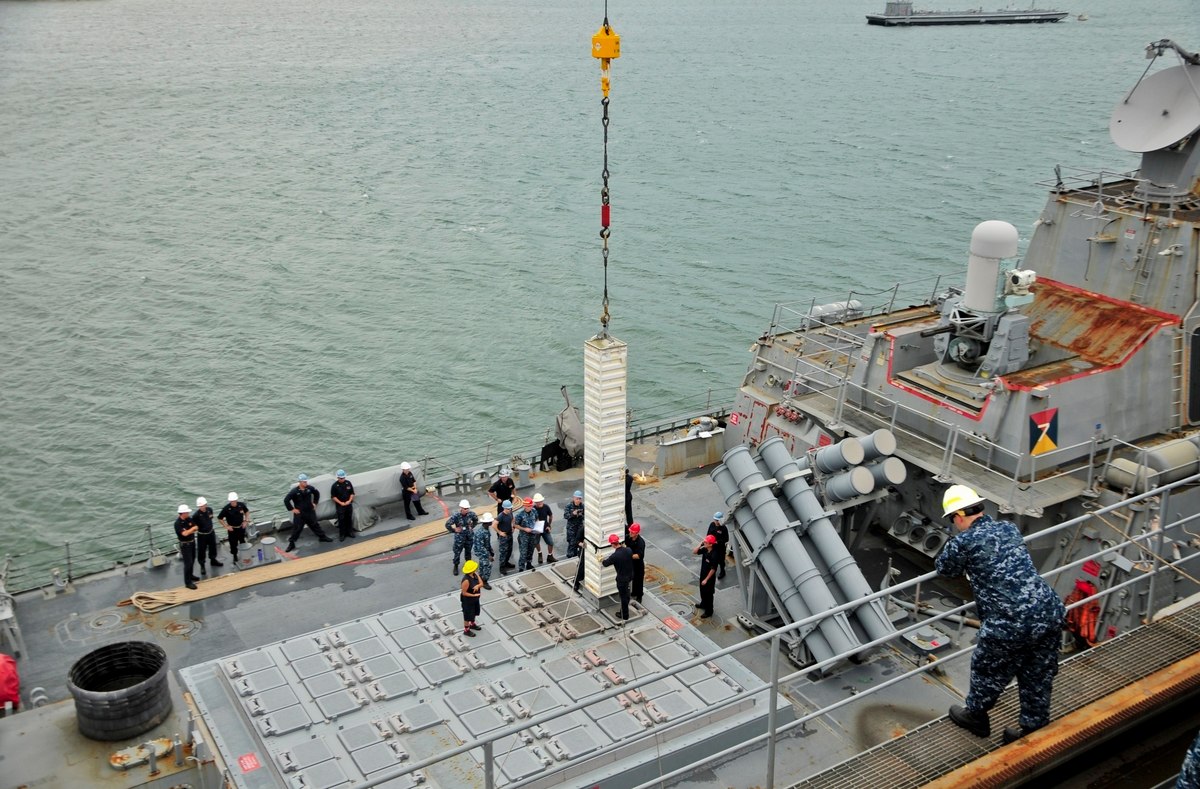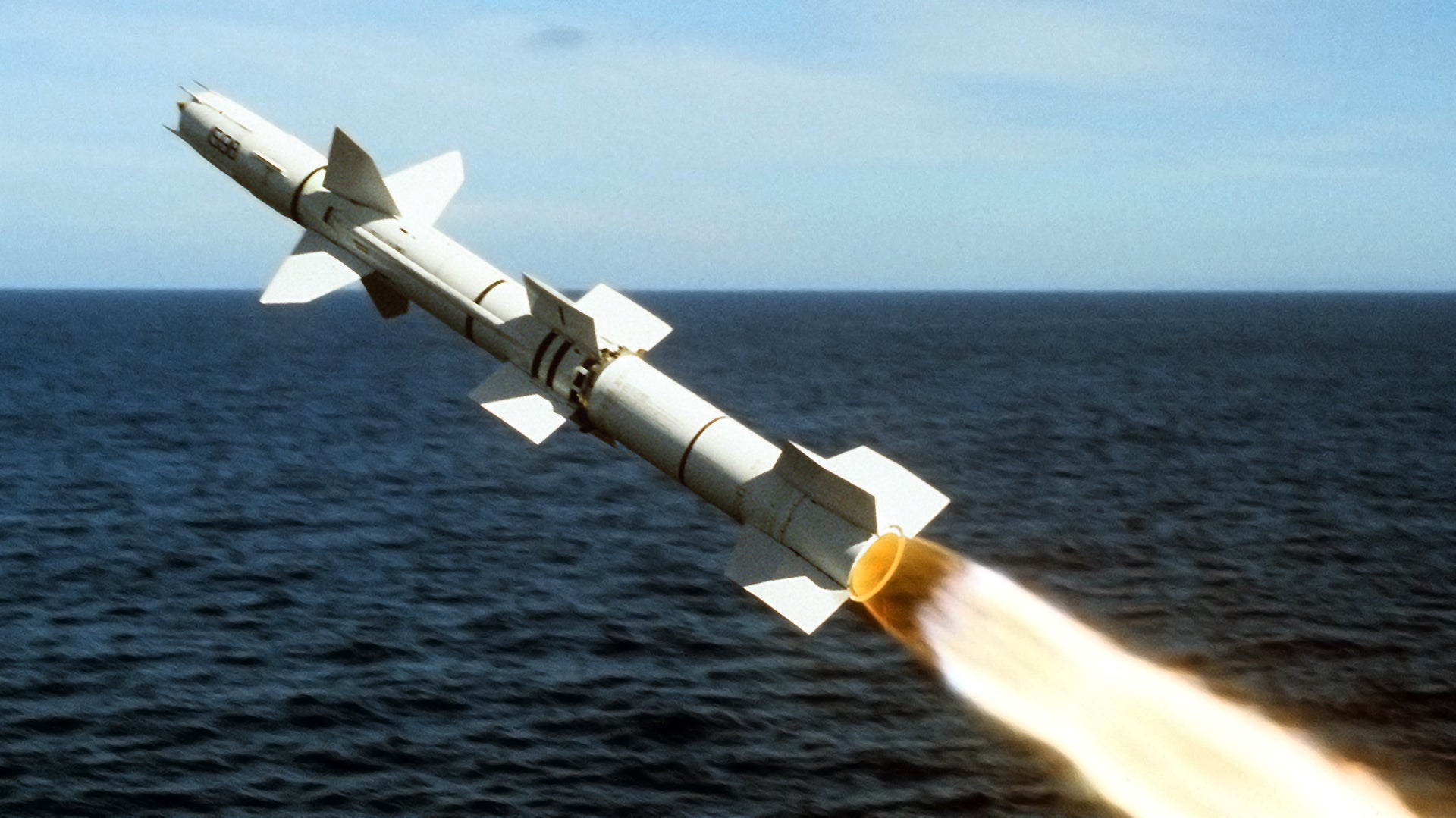Looking back now, it’s downright amazing what weapons designers were able to accomplish with 1950s technology during the early days of the Cold War. This was a time when the most basic of computers took up a large room or even an entire floor of an office building. Yet with slide rules and protractors, engineers designed remarkably complex and usable weapons that pushed the boundaries of what was even thought possible a handful of years, or even months before. One of those systems was the Navy’s hulking RIM-8 Talos long-range naval surface-to-air missile system.
Talos emerged out of the U.S. Navy’s Operation Bumblebee—a protracted endeavor aimed at developing ‘mid-layer’ defensive umbrella (tactically situated between deck guns and carrier-borne aircraft) to protect ships from bombers carrying anti-ship missiles. The initiative was spurred by tough lessons learned in WWII, where Japanese kamikaze and German guided missile attacks haunted military planners. From those experiences, the future of naval combat and the emerging threats that would go along with it seemed alarmingly clear. As did the glaring reality that the WWII era weapons concepts that existed at the time were no match for confronting it.

By the mid-1950s, a number of systems resulted from the project—some of which still share ‘DNA’ with weapons currently in the Navy’s current arsenal. The hardest hitting was Bendix’s Talos surface-to-air missile system which would equip the Navy’s heaviest surface combatants. This was truly an ‘atomic age’ missile, capable of packing a big 465 pound conventional warhead or a W30 nuclear warhead with a two to five kiloton yield.
The missile was guided semi-actively throughout its entire flight by two separate high-power emitters, the monstrous AN/SPG-49 Tracking Radar and the AN/SPW-2 Guidance Radar that worked to continuously illuminate a path for the missile to travel on as it headed out to its target. All this was coordinated by the then state-of-the-art Mk77 Fire Control System.

After being launched by its solid-rocket booster, a Talos missile was basically a flying ramjet engine that would sustain speeds of around mach 2.7 and reach out between 50 and 100 miles depending on the variant. Talos could also be used for launching tactical nuclear attacks on surface targets by sending the missile into an automated dive at a certain point along its flight path. It wasn’t a pinpoint operation, but it was accurate enough to take out a flotilla of ships or an area target on land. The same warhead could be used to take out formations of enemy bombers.
Crazy stuff!

Talos was truly a modular design, with three distinct components—missile, booster, and control fins—needing to be mated together and tested before being declared ready to use. The complex and outsized nature of Talos—the missile was 32 feet long and weighed nearly 8,000 pounds when fully configured—meant that it couldn’t be stored in large numbers in a ready-to-use fashion aboard a ship. So a huge, elaborate, and wonderfully automated storage, mating, and launch system was devised in order to make the missile deployable in a naval combat environment. This support system was literally an armored missile assembly line that has to be one of the coolest and quirkiest Cold War naval innovations.
Dubbed Mark 7 Mod 0 Guided Missile Launching System, this half a million pound, heavily armored, hangar-like installation used a complex overhead crane, elevator, and “rammer” system to move Talos missile components from storage, along the assembly line, and out onto the launcher’s rails. Taking up two stories, it was primarily separated into three distinct sections.

The aft-most section, Area 3, was the Missile Magazine and had two levels where Talos missiles and boosters were stowed. A strike-down elevator and crane would move the missiles around in a complex puzzle-like manner. Once a missile was selected, the system would bring it up and place it along one of two tracked carts located on either side of the warehouse-like like magazine. 30 missiles were typically stored in Area 3 during normal operations.
The missile would then be rammed through an armored and hydraulically operated hatch and into Area 2, the Ready Service Area. Here sailors would mate a hulking 4,400lb solid rocket booster to a Talos missile, readying it for launch. 14 mated missiles were usually stored in trays within this section at any given time. Once that was done, the rammer would push the missile along its track through another automated armored door and into Area 1, the Test Cell.
This section is where sailors installed missile’s control fins and wings—a dozen in all. The missile was transferred from its railed cart to overhead launch rails to do this. The missile was then put through a quick series of diagnostic checks using a computer system before one of two large armored hatches flung open and the rammer would seamlessly push the missile out onto the rails attached to the twin-armed Mk7 launcher turret. Once fire control made sure that there were no ships near the first nine miles of missiles path that could be impacted by its huge booster as it fell away or if the missile failed, the Talos round was sent into the air, roaring and belching smoke as it ascended towards its target.

Area 1 also had a number of other duties. For instance, it collected telemetry day on ultraviolet paper of each flight. This tape-like paper had to be exposed by bright light and would continue to pour out of an imprinting system as the missile flew off. Post-flight analysis of this information would prove confirmation that the missile hit its target as advertised or malfunctioned.
Oh, and there was the whole warhead storage aspect of all this too. Unmated warheads were stored dozens of feet below Area 1 in their own separate and heavily armored magazine located deep in the keel of the ship. Another elaborate set of cranes and elevators were used to load warheads through a hatch atop of Area 1 and all the way down into the magazine, and to bring the warheads up for fitment on missile rounds as needed. A unique fire suppression system would immediately flood the warhead storage magazine, and drown anyone in it, if a large increase in temperature was detected.
How I explained this process was just about as simplified as possible while still being at least somewhat accurate. This was an incredibly complex system that was loaded with intricate processes, many of which are done only at a missile factory today. It also worked in reverse when missiles were taken apart and their components sent back into storage. Luckily, we have this awesome Navy video circa the 1950s that details how the entire system works and showed it in action. Talk about fascinating!:

Suffice it to say, this was an incredibly complex system that relied on the best possible technology available at the time. But for sailors working within the launching system, it was dangerous and stressful work. Just having an arm in the path of a Talos as it was forced out onto the launcher or a hand in the wrong place while components were in motion could cause horrific injury. And considering that we are talking about tubes filled with rocket fuel being scurried about in an environment surrounded by 1950s electronics, one spark or other mishaps could lead to a devastating chain of explosions.
Because nuclear weapons were stored in the Warhead Magazine and in Area 3 and would traverse the entire set of compartments if need be, security was very tight throughout the Talos handling facility and its spaces were alarmed. Anyone with access to the areas needed a high-security clearance and had to be approved by the ship’s captain. An embarked Marine security contingent monitored access in and out of the areas and a two-man rule was implemented at all times.
Firing a nuclear-armed Talos was also far more involved process than firing a conventionally configured missile. If the missiles were ordered into the Area 2 where they would be mated with a booster for quick use during a crisis, a number of safeguards were put in place that would keep them from being launched accidentally or by a saboteur.

In Area 2, a locked rig was attached to the missile in its tray that would keep it from being loaded onto the missile launcher rails. This could only be unlocked by the ship’s Weapons Officer. A safing plug was also installed that would be detected by the automated Talos diagnostic system and it would not allow it to be moved to the launcher’s rails. A special purple-colored arming plug would have to be put in its place and those were locked in safes in Area 1. Only the captain had the safe combo and it would be conveyed from the bridge to the compartment by the captain in the event that a nuclear launch was ordered.
Finally, a large switch-like handle had to be thrown in both Area 1 and in Weapons Control. The one in Weapons Control was locked and could only be unlocked by a key held by the Weapons Officer. Only then could the Talos system proceed with the launch sequence.

So considering that Talos could start Armageddon, it couldn’t happen without a number of fail-safes being unlocked by multiple people both in the Mark 7 Guided Missile Launching System and in two other command areas on the ship.
Maybe what’s most amazing about the Talos Guided Missile Launching System is that it took under a minute to launch a Talos missile once it was moved from Area 2 to Area 1, and interval times decreased after the first salvo was fired (two missiles were used to attack a single airborne). So considering how convoluted, clunky, and manpower intensive it was, the system was remarkably efficient in combat.
Talos was truly one of the most intricate combat systems of the era and its huge launching mechanism is just one aspect of its story. But it remains one of the most representative contraptions that captured the unique mix of heavy industrial ingenuity, atomic weaponry, emerging computerized systems, heavy manpower, and the all-American production line mindset that permeated the era. In comparison, today, a missile with similar range and far more capability and reliability comes packed in an ‘all up round’ container and can be launched in an instant from an enclosed vertical launch cell remotely. A human being may not even touch the missile for an entire cruise or even much longer.

This won’t be the last you will hear from me about the Talos systems or its two cousins, Tartar and Terrier, which made up the Navy’s ‘Three Ts’ missile complex from that colorful era. But there is no better source on the ins and outs of the Tartar system than over at Okieboat.com. It is one of the best-produced sites on a single military subject on the net and just the diagrams and the description of Mark 7 Guided Missile Launching System alone is worth the click!
Contact the author: Tyler@thedrive.com
